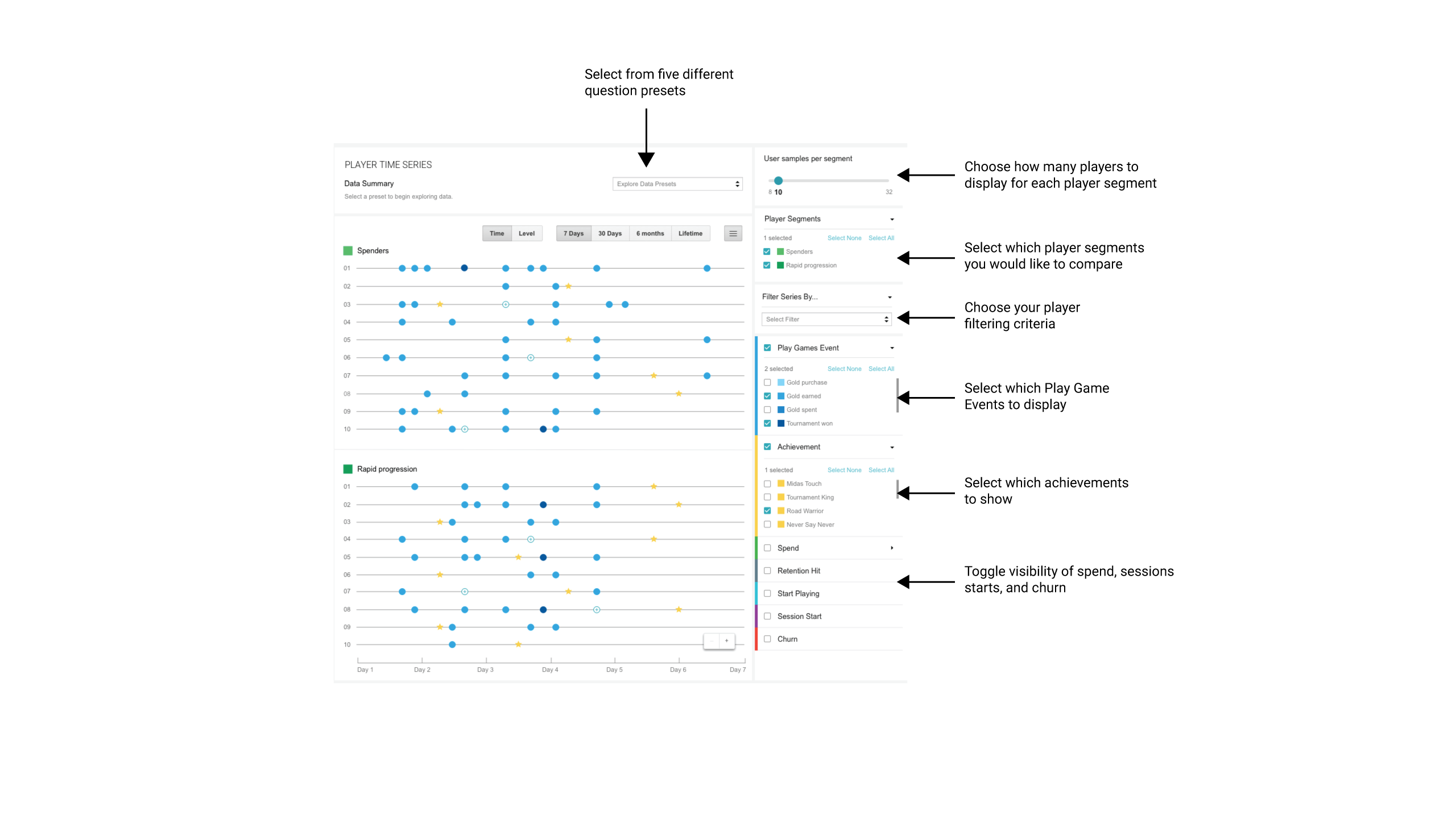Earlier this year, Google launched Play Games Player Analytics, a service that allows game developers to get improved analytics for what their users are doing while they are playing their games.
Today, the company is updating this service with a new report for tracking users during their first couple of minutes of gameplay, a new API for letting developers take their analytics data to tailor gameplay to specific segments of users, and improved iOS support.
Using Google’s new Player Time Series Explorer, developers can get a better idea of what their players are doing during critical moments in a game. None of these are more important than the first few minutes a player plays, though. That is, after all, when somebody decides whether a game is too hard, too easy, or just right. Using these new time-series reports, developers can now capture what happens during this time and hopefully understand how they need to tweak their games to improve retention. While the focus here is clearly on the first few minutes of gameplay, developers can also see reports for other points in a game, too.

Similarly, Google’s new Player Stats API now allows developers to tailor the gameplay to specific user segments. If somebody can’t quite figure out a game, for example, a developer could use the data from Player Analytics and pop up an explainer video. Or a developer could show highly engaged players who just aren’t spending (because they – like everybody else – are probably tired of free-to-play schemes) a free gift that may entice them to spend a bit more later.

Despite Google’s overall focus on Android, Player Analytics has long supported iOS, too. Now, the company is releasing improved CocoaPods support that will make it easier to configure Play’s game services in Xcode. The new SDK also supports Google’s new sign-in framework with support for authenticating viral Google apps like Gmail and YouTube (and if the player doesn’t have any Google apps installed, the SDK will bring up a webview instead of switching to Safari).
The new features in the SDK are clearly meant to improve player engagement. As player expectations and the mobile game business model change, it’s more important now than ever for developers to keep players coming back to their games. The next diversion, after all, is only a few clicks away.
